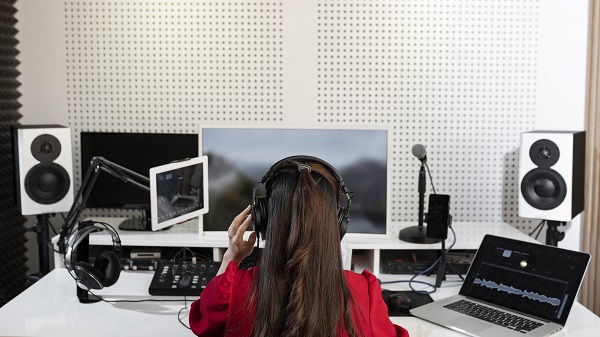Choosing Studio Monitors: A Quick Guide
Are you looking to upgrade your studio monitors? With so many different options available, it can be hard to know where to start. In this quick guide, you'll learn the basics of choosing studio monitors, from types of monitors to placement and setup. You'll be able to find the perfect monitors for your studio in no time! Key Takeaways
Types of MonitorsThere are three main types of studio monitors: active, passive, and powered. Active monitors are the most common, and are usually the most affordable option. They come with built-in amplifiers, meaning they can be powered directly from the sound source. Passive monitors require an external amplifier and are a great choice for larger rooms, as they can be more powerful. Powered monitors are a mix of active and passive, offering a convenient and cost-effective option. Each type of monitor has a different price point, so be sure to consider your budget and the size of your recording space before making a purchase. Frequency ResponseWhen it comes to selecting studio monitors, frequency response is an important factor to consider. This term refers to the range of sound frequencies that the speaker can accurately reproduce. Room acoustics and listening distance play a large role in the accuracy of the sound. Generally, the wider the frequency range, the better the monitor. A frequency response of 20Hz - 20kHz is ideal, as it covers the entire range of human hearing. However, some monitors can produce frequencies even lower and higher than that range. It's important to note that frequency response isn't the only factor to consider when selecting studio monitors, as other factors such as size, power, and price play a role as well. Power OutputFrequently, power output is another factor to consider when selecting studio monitors. When mixing, sound levels must remain within certain boundaries. Thus, your monitors must have enough power output to handle the maximum sound levels of your mix without distortion. It's important to know the maximum sound level of your mix, as well as the power output of your monitors, to ensure a distortion-free sound. Power output is measured in watts and should be at least twice the mixing levels for optimal performance. Furthermore, it's important to select monitors with a power output that's suitable for your listening environment. Monitors with higher power output can be louder but can also be overwhelming in smaller spaces. PlacementProper placement of your studio monitors is essential for optimal sound quality. To begin, it's important to consider the acoustics of the room. This includes the size, shape, and material of the walls. Generally, it's best to place the studio monitors in a position that creates an equilateral triangle between the monitors and the listener. Additionally, the space should be soundproof to prevent external noise from interfering with the sound quality. Soundproofing materials such as acoustic foam, diffusers, or sound baffles can be used to reduce unwanted noise. Finally, if the studio monitors are installed on stands, make sure they're securely attached and placed on an even surface. Setup ProcessOnce you have placed your studio monitors in the optimal position, the setup process begins. Connecting cables from the monitors to the receiver or amplifier is the next step. Before powering up the system, it's important to check that all the connections are securely made. Once the connections are verified, power on the system and adjust the gain to an appropriate level. Next, adjust the room acoustics by using acoustic treatments in the room, such as bass traps and acoustic foam, to reduce any potential reverberations. Finally, use a sound meter to measure and adjust the volume of the studio monitors to optimal levels. Following these steps will ensure that your studio monitors are properly set up for optimal performance. ConclusionChoosing studio monitors is a detailed process, but it doesn't have to be difficult. Make sure to consider the type, frequency response, power output, and placement of your monitors, as well as the setup process. Once you've got all these details in check, you'll be ready to enjoy the amazing sound quality of your new studio monitors!
|
| |
|
Copyright © 2011 Perfect Porridge - All Rights Reserved |
||

